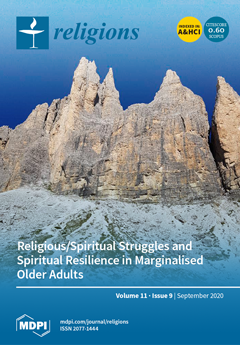In the wake of numerous terror attacks around the globe, academic and popular discourse on radicalization has witnessed exponential growth in publications that, sadly, have not resulted in a coherent or consensus definition of the concept, nor have they determined its causality and
[...] Read more.
In the wake of numerous terror attacks around the globe, academic and popular discourse on radicalization has witnessed exponential growth in publications that, sadly, have not resulted in a coherent or consensus definition of the concept, nor have they determined its causality and effects. In this article, we use the term
three-pronged process of radicalization by narrative to denote an ongoing process of meaning-making, adaptation, and coping, and argue this process to be inherently linked with the social, cultural, and ideological construction and reconstruction of the identity arch-story of individual lives. We suggest that, in some cases, the ceaseless process of social interaction of identity narratives eventuates in what we define as
the Shapeshifting Self, by coherently fusing stories of personal loss, rupture, or trauma together with the counterparts of movements and national stories of sociopolitical engagement. At the endpoint of the process, violent engagement is perceived by the self as legitimate and even necessary for the psychological well-being of the perpetrator. By applying this approach to the
Jewish-Israeli context, we aim to illustrate the socioculturally situated contingencies associated with the process of radicalization by narrative.
Full article





